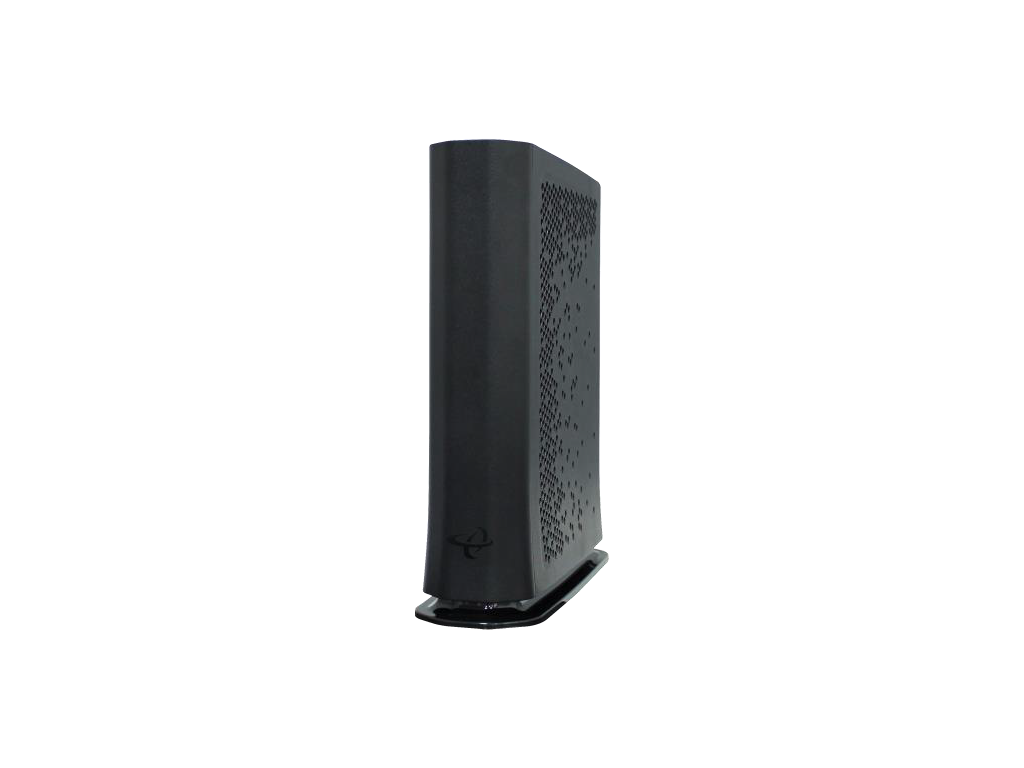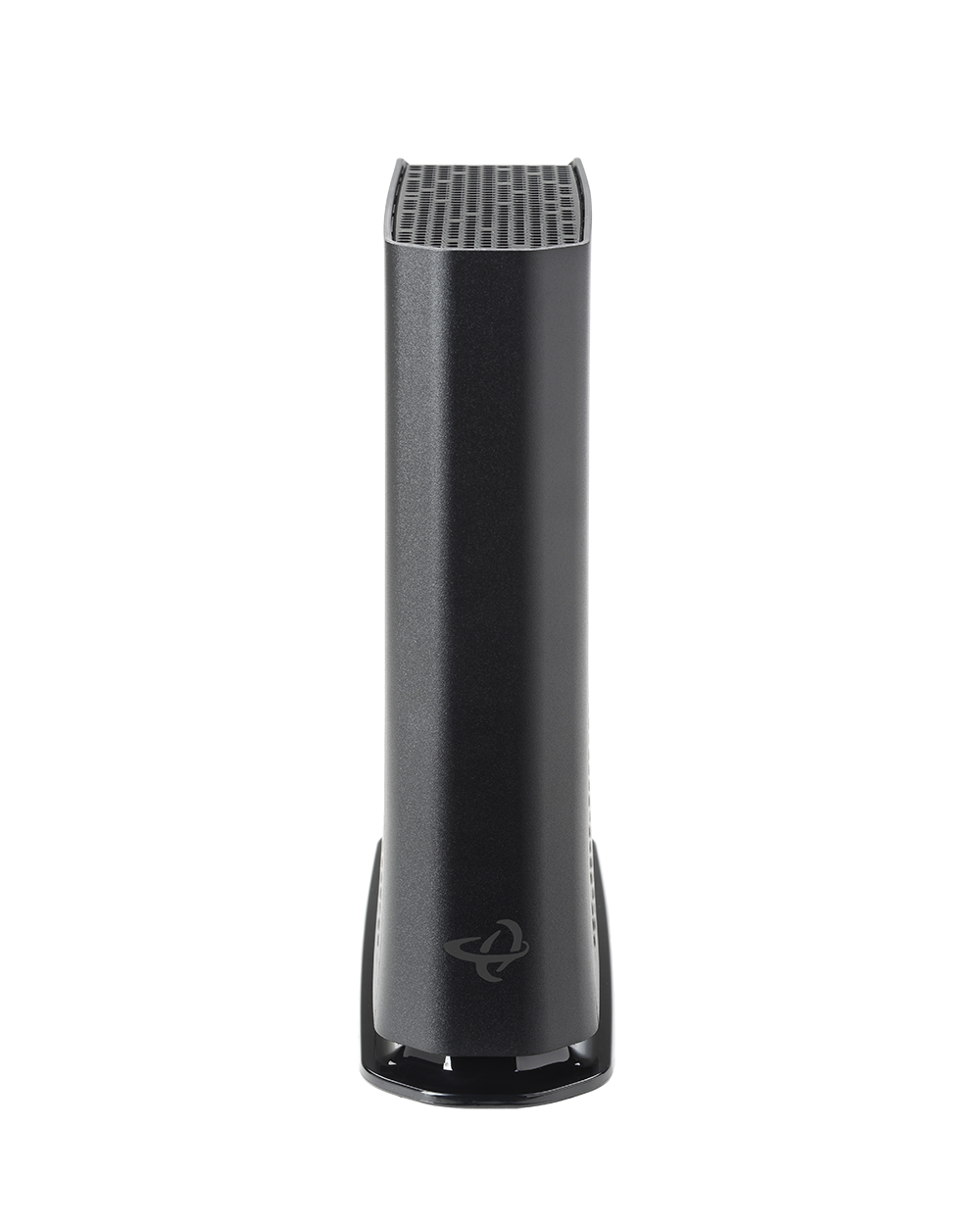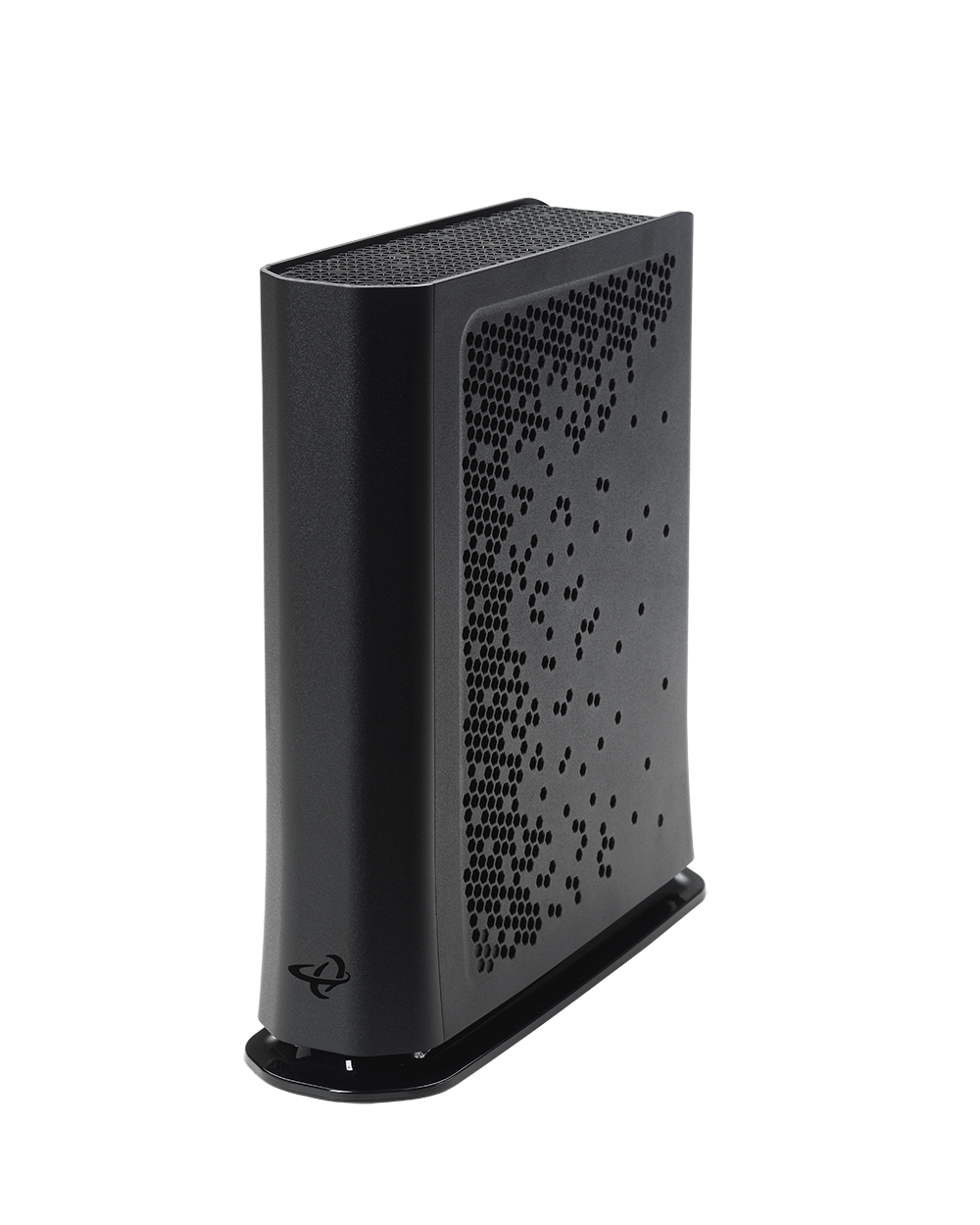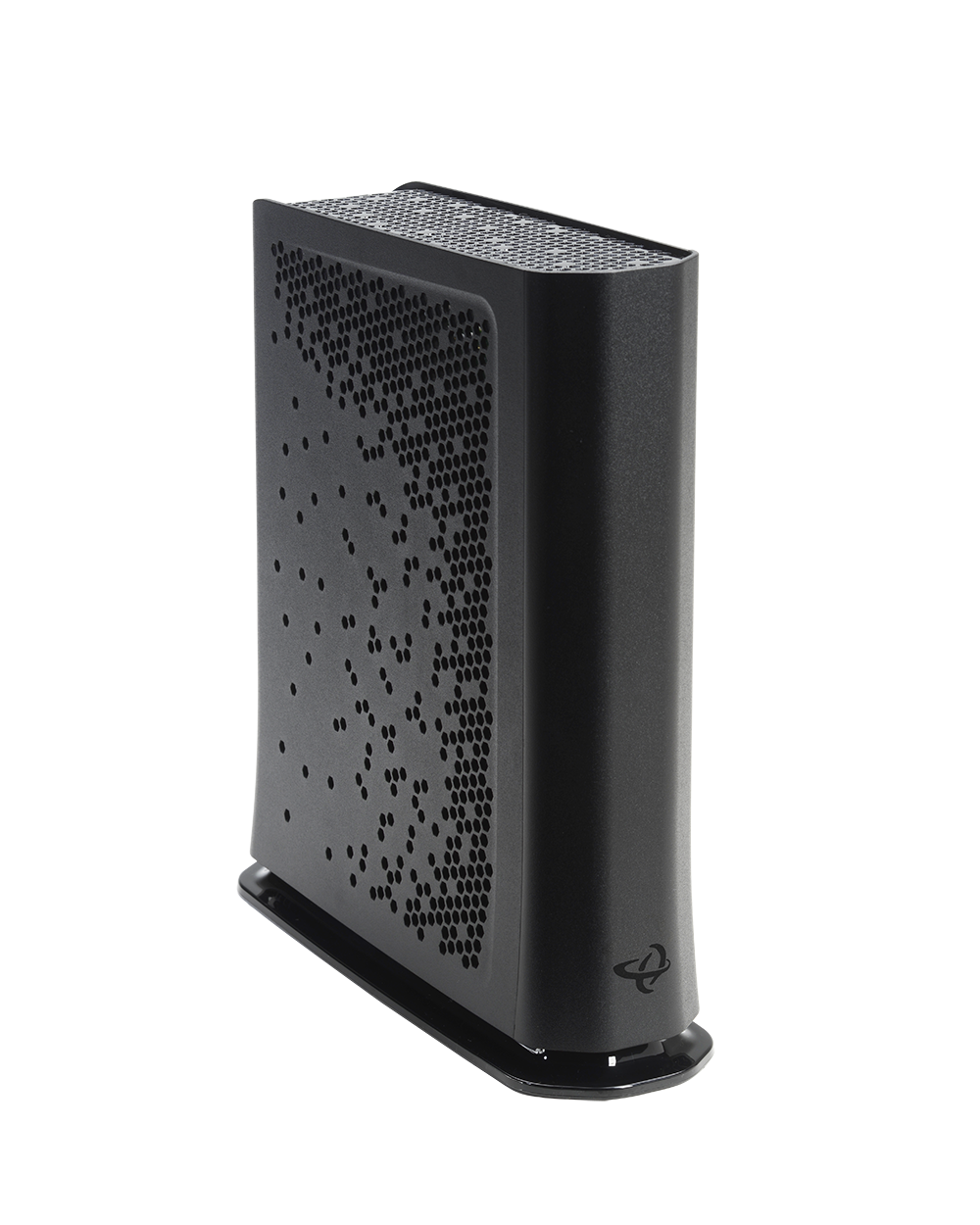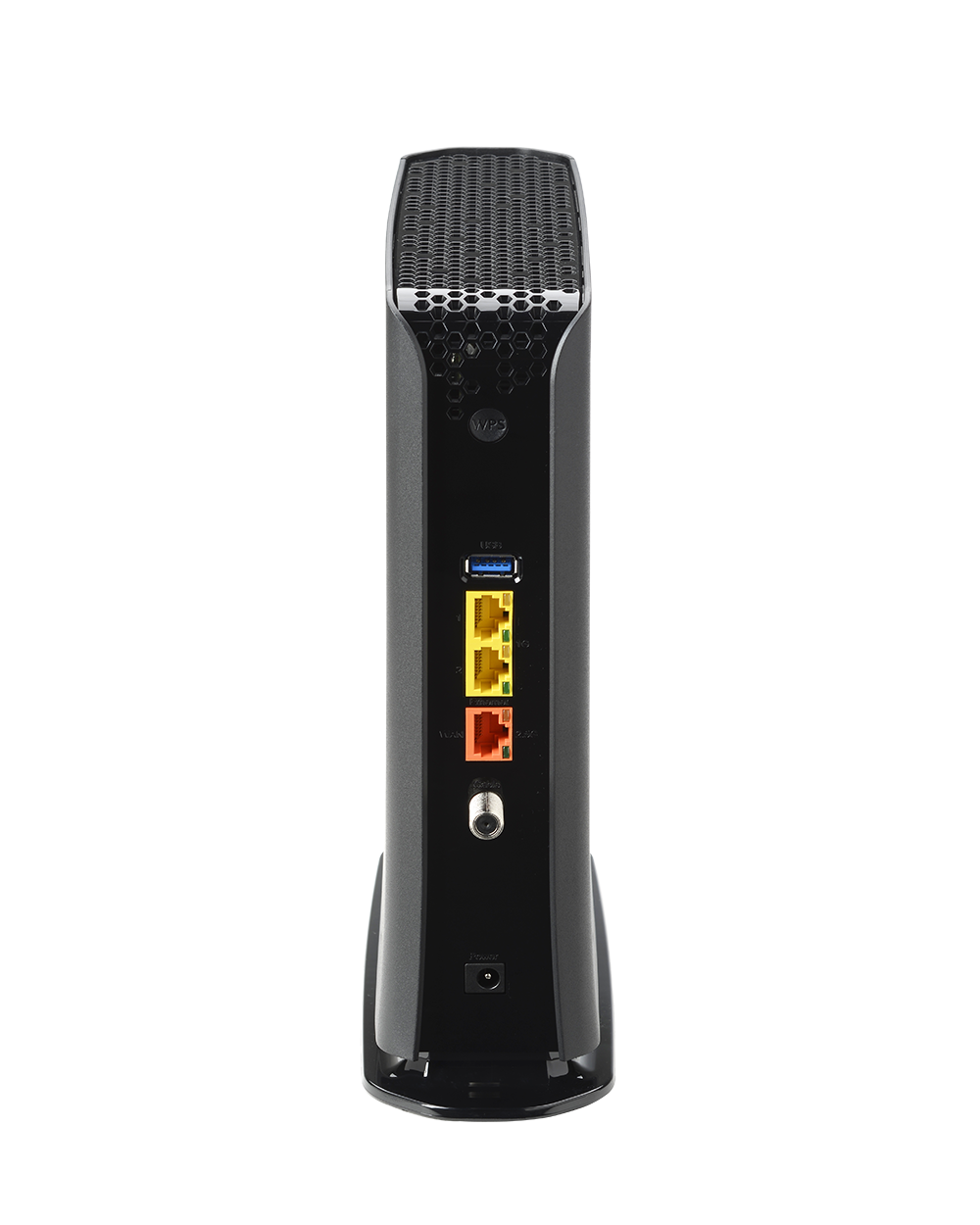Multi-Gig DOCSIS 3.1 Performance
With 2×2 OFDM/OFDMA and DOCSIS 3.0 32×8 bonding, the CODA-5712 delivers reliable multi-gigabit downstream capability while maintaining backward compatibility with DOCSIS 3.0 networks.
Switchable Upstream Frequency
Operators can toggle between 5–85 MHz and 5–204 MHz upstream paths, enabling smooth migration to high-split or future network architectures without swapping out hardware.
Robust Wi-Fi 6 Coverage
Dual-band Wi-Fi 6 with 4×4 5 GHz and 4×4 2.4 GHz radios delivers faster speeds, lower latency, and more efficient performance for multiple connected devices.
Built-in MoCA 2.0 Bonding
Turns existing coax wiring into a high-speed backbone—ideal for extending Wi-Fi coverage or providing stable wired connectivity in hard-to-reach areas.
Enhanced Wired Connectivity
Equipped with 1× 2.5 Gbps Ethernet port and 2× 1 Gbps ports for premium wired connections, plus a USB 3.0 port for media and NAS use cases.
Effortless Setup & Remote Management
Supports SNMP, TR-069, TR-369, HNAP, MyHitron+, and HitronCloud for simplified provisioning, diagnostics, and lifecycle management.
Benefits for Service Providers
- Comprehensive One-Box Solution: Combines DOCSIS 3.1, Wi-Fi 6, and MoCA into one device, reducing the need for multiple pieces of equipment.
- Future-Ready: Flexible upstream tuning ensures operators are prepared for evolving network upgrades.
- Hybrid Connectivity: MoCA delivers wired stability via coax while Wi-Fi 6 ensures high-capacity wireless coverage.
- Operational Efficiency: Streamlined deployments with remote management reduce support costs and truck rolls.
Key Specifications
- DOCSIS Support: DOCSIS 3.1 (2×2 OFDM/OFDMA) + DOCSIS 3.0 (32×8)
- Upstream Tuning: Switchable 5–85 MHz / 5–204 MHz
- Wi-Fi: Dual-band Wi-Fi 6 (4×4 5 GHz + 4×4 2.4 GHz)
- MoCA: Bonded MoCA 2.0 for high-speed coax-based wired uplinks
- Ethernet Ports: 1× 2.5 Gbps + 2× 1 Gbps
- USB Port: 1× USB 3.0
- Management: SNMP, TR-069, TR-369, HNAP, MyHitron+ app, HitronCloud
Documentation
Other Products to Consider
Product
Modem Type
Frequency
WiFi
Wired LAN
Voice
Learn More about Cable Modems & Routers
What’s the Difference Between a Router and Modem?
The difference between a router and modem is simple: A modem connects your home to your Internet Service Provider (ISP) and brings Internet service into your home. A router takes that Internet connection and shares it wirelessly (or wired) with your devices inside the...
How to Reset a Cox Cable Modem
If your Internet isn’t working right now, here’s what you need to know fast:Restarting your Cox modem is a quick power cycle that keeps your settings and often fixes slow or dropped connections. Resetting, on the other hand, erases everything and restores factory...
Spectrum Modems: What You Should Know Before Buying or Upgrading
Not all modems work with Spectrum. To use your own modem, it must be on Spectrum’s approved modem list and support the right DOCSIS standard (usually DOCSIS 3.1). Spectrum offers rental modems, but many customers choose to buy their own to save money and get better...
What’s Required to Be an Approved Xfinity Modem Router?
To use your own modem with Xfinity, it must be approved by Comcast, support DOCSIS 3.1, and match the speed tier of your Internet plan. Approved modems are listed on Xfinity’s website and are tested for performance and reliability. Choosing a compatible modem gives...
What Modems Work with Xfinity? (And How to Choose the Right One)
Yes, you can use your own modem with Xfinity—as long as it’s compatible with their network. To avoid rental fees and get faster speeds, choose a DOCSIS 3.1 cable modem that is certified by Xfinity. Hitron’s CODA and CODA56 modems are reliable, high-performance options...
